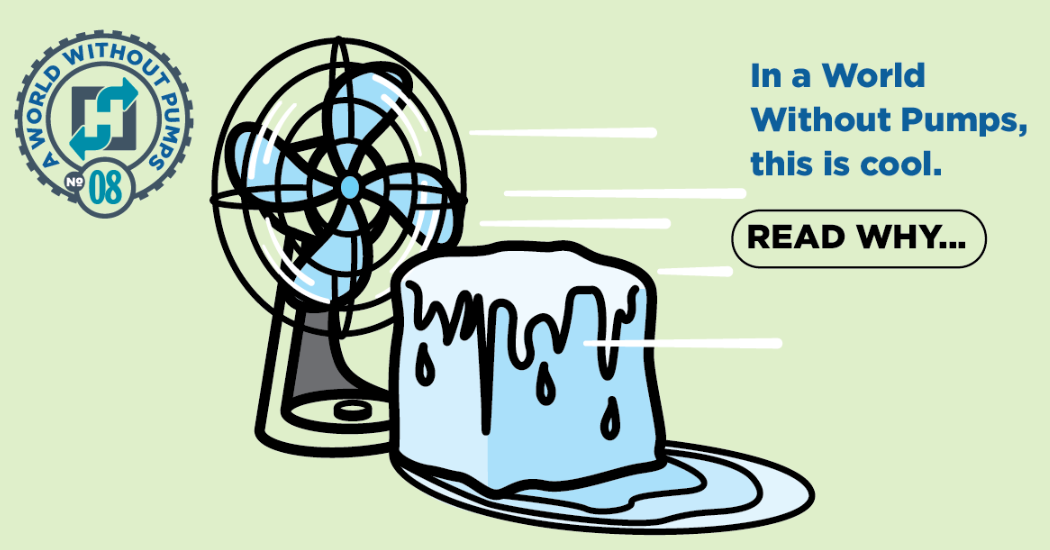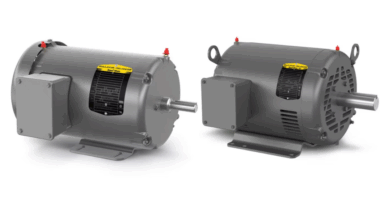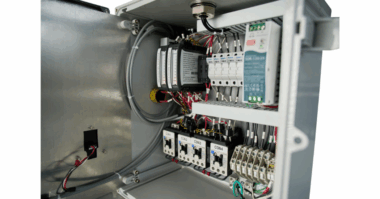Pumping Away the Discomfort
In a world without pumps, a fan blowing air over a block of ice would be considered air conditioning. Would we, in this ever-evolving world, tolerate this type of technology? Well, so many of the comforts we take for granted today wouldn’t exist without pumps. Pumps keep fluids moving in modern-day equipment and systems that minimize or eliminate our discomfort, and our lives wouldn’t be the same without them. Here are some examples of how pumps bring comfort to our lives.
At Home
One of the biggest reasons we are comfortable at home is our ability to manage the indoor climate. A century ago – and more recently in rural areas and small towns – people piled logs onto the fire or shoveled coal into the furnace to keep warm. They would also fan themselves or open windows to catch a breeze to cool themselves during a hot summer’s day. While pumps play a major role in providing comfort in large apartment and commercial buildings, they also have a support role in our homes today. Specifically, high efficient air conditioning units will require a pump to remove condensate when they are installed in a location where they are unable to utilize gravity. They are also at the heart of home hydronic heating systems, which transfers heat using circulating hot water.
Just as important, is the comfort of having water available on demand whenever you turn on the faucet. Without the pumps that serve our municipal water systems or private wells, we’d still be pumping water by hand or drawing it from a well or river and carrying it home. Without flushing toilets, we’d be heading out to the privy in all kinds of weather. There would be no relaxing under a hot shower, or soaking leisurely in a tub or spa with stimulating jets of water.
Many other things that help make our homes and lives comfortable depend on pumps. Often, a pump is installed at the water heater outlet to ensure you get hot water whenever a faucet is opened by keeping it in constant circulation. Without your dishwasher, you might still be heating kettles of water on the stove and washing and rinsing dishes by hand. Without internal centrifugal pumps that increase water pressure to spray and clean bowls, utensils, and dishes, life in the kitchen would certainly not be as comfortable as it is today. We also owe a debt of gratitude to the pumps that have made possible the washing machines that put an end to the drudgery of doing the laundry by hand. After the washing machine completes its programmed wash and rinse cycles, an internal centrifugal pump empties the water quickly into a drain.
Who doesn’t like a cup of morning coffee? Instead of waiting for your pot to brew, you can just pop a K-cup in your Keurig coffee maker, where an internal pump moves water from the machine’s reservoir into the heating element when it is switched on. If you have an espresso machine, you’re using an internal pump that creates the pressure that enables your coffee maker to extract the espresso.
If you have a swimming pool that you love to relax in, thank the pump that serves its essential circulation system. The pump circulates water from the pool out of the skimmer and main drain, then through a filter before it returns the water back to the pool through the main returns. Hot tubs also require pumps that operate virtually all the time, often at a high rate of speed, constantly pumping water loaded with chemicals. Spa pools have two pumps, a circulation pump that operates continuously to move water slowly throughout the spas filtering system and a booster pump that increases the flow rate when desired.
Your home may have one or more sump pumps that provide peace of mind by preventing basement water damage. Installed in a basement sump (pit) that collects water flowing from drain tiles around the house’s foundation, they pump the water into a pipe that carries it away from the house. If your home has a septic system, the “honey wagon” that empties your tank periodically has a powerful vacuum pump that can even pick up small rocks. Pumping the septic tank at proper intervals eliminates the discomfort of dealing with a sewage backup.
Wherever You Go
The large apartment buildings and the commercial buildings you visit, whether for shopping, business, seeing the doctor or pleasure, are heated and cooled by systems far more complex than the ones in your home. Many of them use water for heating and cooling. They use centrifugal pumps supporting the operation of chillers, boilers, cooling towers and hydronic distribution systems to provide comfortable temperatures.
When you’re strolling through a park or public garden, there may be fountains that create the peaceful sounds of splashing water to relax you. Some even put on a show, with streams of water jumping across a plaza in timed, soothing patterns. They’re all created by pumps. And if you’re relaxing and cruising on a lake with your jet ski or jet boat, a pump produces the water jets that propel and steer the machine.
As you chill out with a beer at your local brew pub, you may not be aware that there are sanitary pumps used in the beer-making process. These may be either centrifugal or positive displacement pumps, depending on their place in the process. There and in multiple other places, pumps are working behind the scene to make your life more comfortable and pleasing.
Check out the other World Without Pumps!
Learn more from the Hydraulic Institute.




